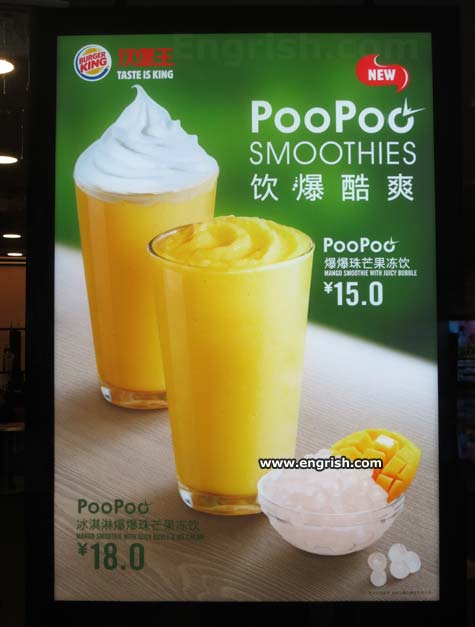 |
| It's the good stuff. |
Example Story
Setup: Let's use a story I heard from my brother-in-law, who is a dentist. We'll say I'm helping another dentist understand the importance of getting the translation right.
Story: The other day, my brother-in-law, who is a dentist in Idaho, told me about a translation that he had for his practice. They go with a lot of Spanish-speakers so they had written instructions of what to do after a root canal. One patient came back in a couple of weeks after the root canal and asked when he could start eating regular food again. The dentist asked, "what have you been eating?" "baby food," responded the patient. The dentist let him know that he only needed to be eating soft food, not baby food. Obviously, they didn't pay much for that translation and it hurt them in the end.
Analysis
This is a very typical type of story told within the localization industry. The translator relates to the customer a story of when a bad translation hurt their future business. The translator is trying to help the customer know that his expertise in the field will keep him from making any mistakes that would hurt the customer's image.
Re-telling the story
Because the translator is trying to keep the dentist's business he or she can make the consequences more vivid.
Diego goes back to the store with the last of his family's food stamps thinking to himself: "There has got to be a cheaper way around this." You see, Diego was forced to the dentist two weeks earlier, when his tooth was hurting him so badly, he could no longer work. When he got home after the operation, he was amazed that the instructions required him to eat baby food 'until further notice.' He soon noticed how expensive Gerber was when feeding a grown man. After two weeks and a diminishing bank account, he returned to the dentist only to find out that 'baby food' was a mistranslation and that he only needed to eat 'soft food.' Frank, do you think Diego is ever going back to that dentist?
I emphasized Diego's predicament by adding his own thoughts and background. I put the middle of the story at the beginning to catch the readers attention. I finished with a question that will help the reader agree with my opinion. I don't think Frank is going to want his patients to be buying 10 cans of Gerber a day.
Oh my goodness have I been the recipient of mistranslation. I remember in a cute notebook I got from my sister in Taiwan that had a quote that said, "how long haven't you baked potato?" It's amazing how my view changed and I thought a little bit less of Taiwanese products- especially with that company. Things can get pretty bad when the translation is for other things besides notebooks. Well put with your story- helps us realize it really did have a big negative personal affect on the Diego.
ReplyDeleteYour second narration is definitely more vivid. You draw a picture in the reader's mind of Diego and his suffering, which is completely lacking in the first story. The addition of the question at the end really hones in on your point: Bad translations translate into lost business. Your second version is definitely more persuasive.
ReplyDeleteI'm sure this is a common problem, especially in parts of the country where there are a lot of immigrants. However, I'm just wondering how these examples distinguish between localization and language translation.
ReplyDeleteYou make a valid point and I should explain the differences. In short, translation is a step in the localization process. So, my posts will have a lot of both. Thanks for bringing that up, I'll have to throw that in my final paper somewhere.
Delete